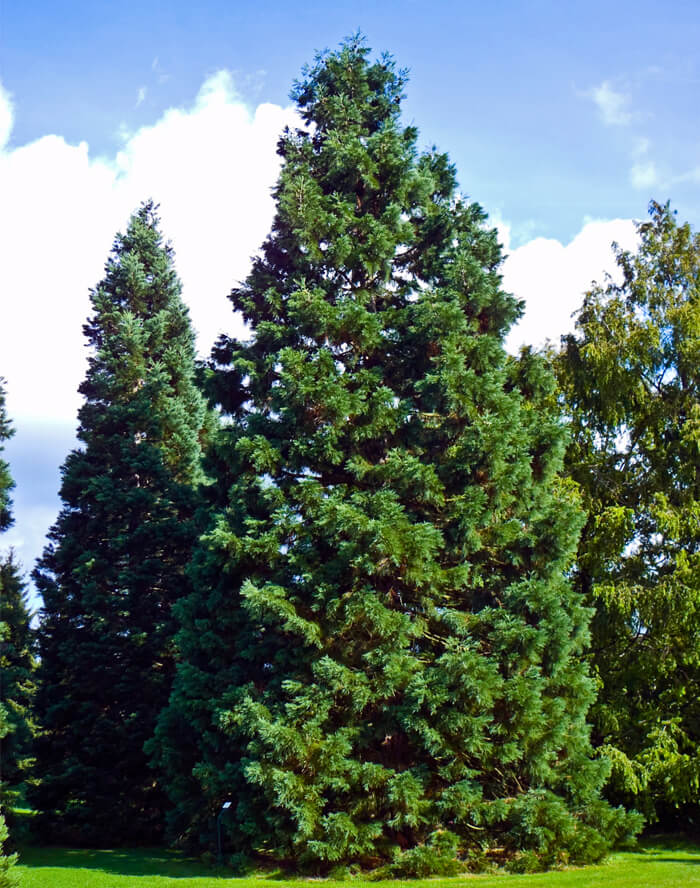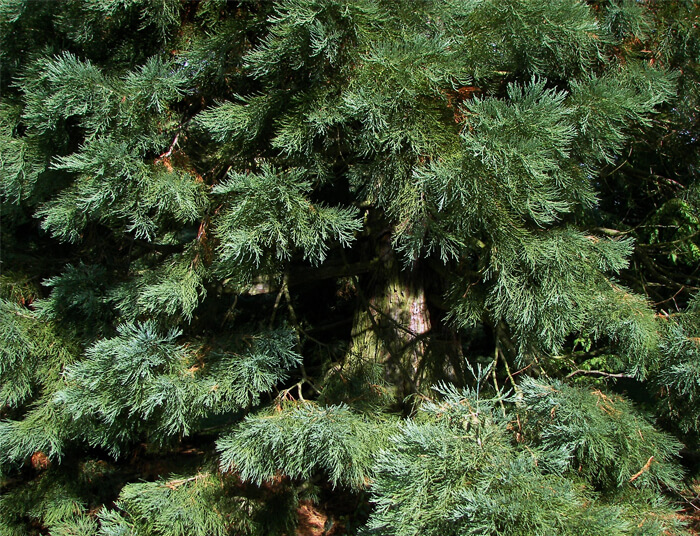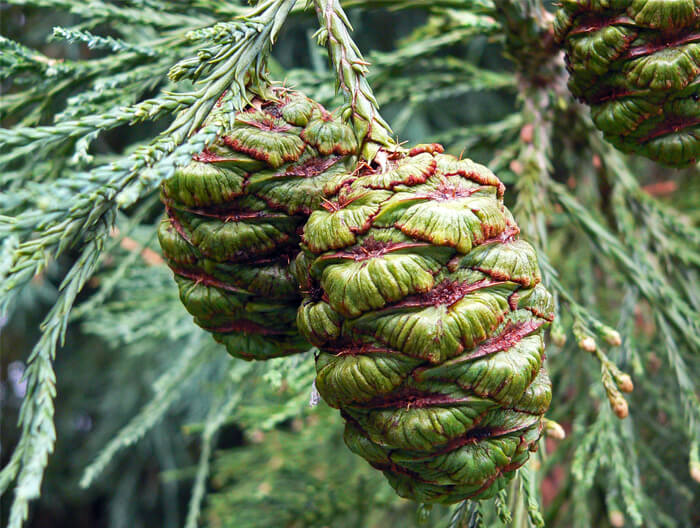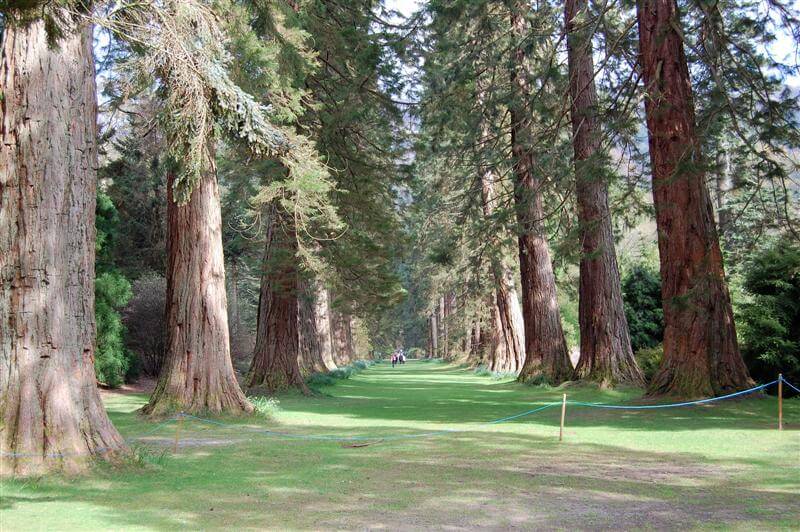Giant SequoiaSequoiadendron giganteumHeight: 200' average mature height Hardiness Zones: 6-8 Find my zone Aspect: full sun to mostly sun
Size Availability
A gorgeous tree that quickly grows very dense foliage in a pyramidal/conical form without any pruning. Closely related to the Giant Coast Redwood, this Sierra Redwood grows in California's Sierra Mountains and so is adapted to significantly colder winters and hotter summers than the Coast Redwood. There are very few trees growing in the wild, in fact the National Park Service has an actual count of every known tree in its range. However, this species doesn't require very many trees to attract attention as some of those at the Giant Sequoia National Park are nearly 3,000 years old and stand around 280 feet tall, with trunk diameters of over 30 feet. 30 feet is more than it sounds, that diameter can be matched by
five
people
six feet tall
laying head to feet in a line!
deep plug - 10 to 14 inches tall - $9.99 each
Bulk Pricing: $8.50 each for 5 or more - 15% off Bulk Pricing: $7.50 each for 10 or more - 25% off
Ships free with orders of $75!Packed with a bagged root ball.
Luckily, this fantastic tree can be grown in medium sized landscapes because, although it will always be a large tree, it doesn't reach excessive sizes until several hundred years. Just be careful not to plant this tree right against buildings or power lines that will cause headaches a generation or two from now. Here in the Rogue Valley, this is a very common tree seen in various parks, roadways, and home gardens (in fact there is an excellent 100' tall specimen across the street from our nursery) and is popular because of its strong wood, fast growth and large trunk diameter.
Giant Sequoias are significantly more heat and drought tolerant than Coast Redwoods (being native to inland Northern California, it has to be!). As a real-world test for drought and heat tolerance there is a stand of trees growing in a rest stop not far from our nursery in Southern Oregon that has thrived with no intervention since planting. The trees are about 40 feet tall and are growing happily with no summer irrigation in a climate where temperatures often reach near 100 degrees with very low humidity and infrequent to non-existent summer rainfall. Years later, we found a far more impressive testament to the Giant Sequoia's drought tolerance growing alongside a logging road in the hills above the Applegate River. It appears that a Sequoia was planted with Douglas Fir after a clear cut - perhaps an errant seed got into the wrong bed at the Forest Service seed nursery and the seedling was put there by planting crews. But it grows happily on a steep hillside in the full sun alongside Ponderosa Pine and Douglas Fir on a dry, rocky slope.
Why do these trees stay smaller in landscapes?
Although the Giant Sequoia gets massive anywhere it is happy, it will typically stay closer to 70 feet tall as opposed to 250 feet or more. First of all obviously it takes quite a long time for a tree to grow hundreds of feet tall, but even old trees seem to hit their height limits early in landscapes. This is primarily due to the isolation of a single large tree. By 70-100 feet above ground level there is little shelter from wind provided by other trees and ground topography. High winds at the top of the tree can easily damage the fragile growing tip, causing it to have to re-develop several times each year which causes the growth rate to slow down significantly or even stop. In their native environment there are many other large Sequoias of similar heights that provide wind shelter and allow each other to attain much larger heights.
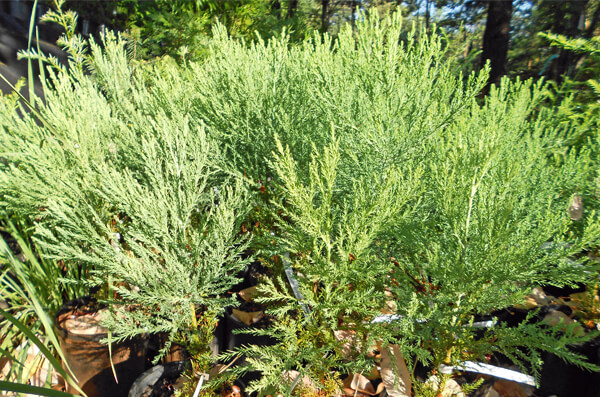
Potted one gallon Giant Sequoia Redwoods 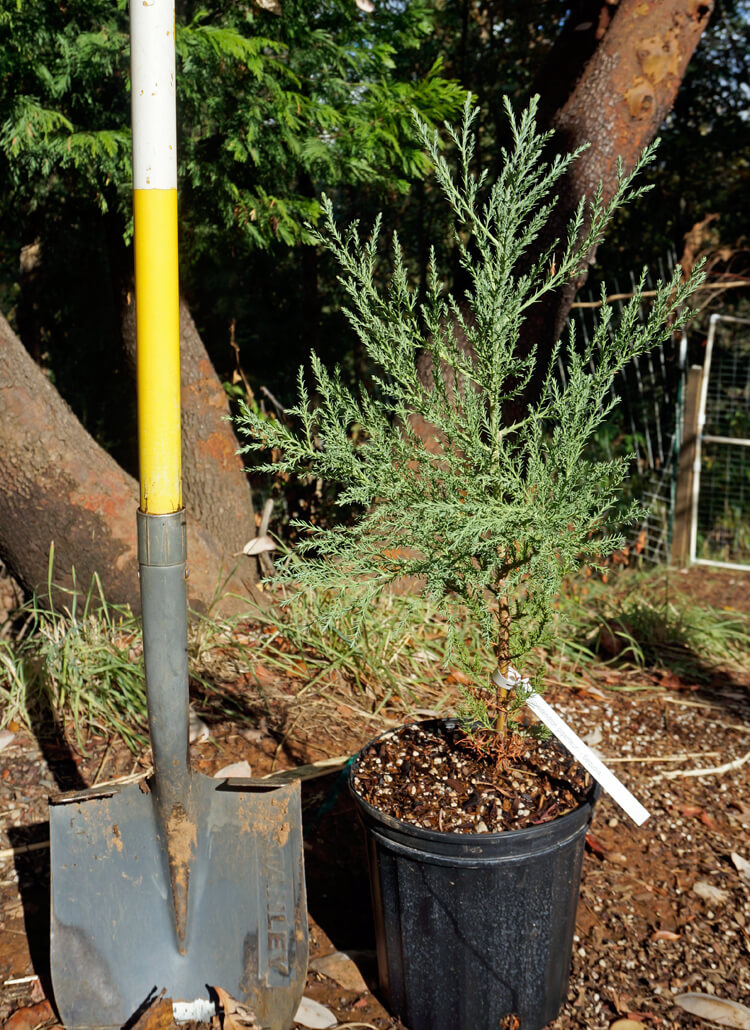
Potted two gallon Giant Sequoia Redwood ready to ship. 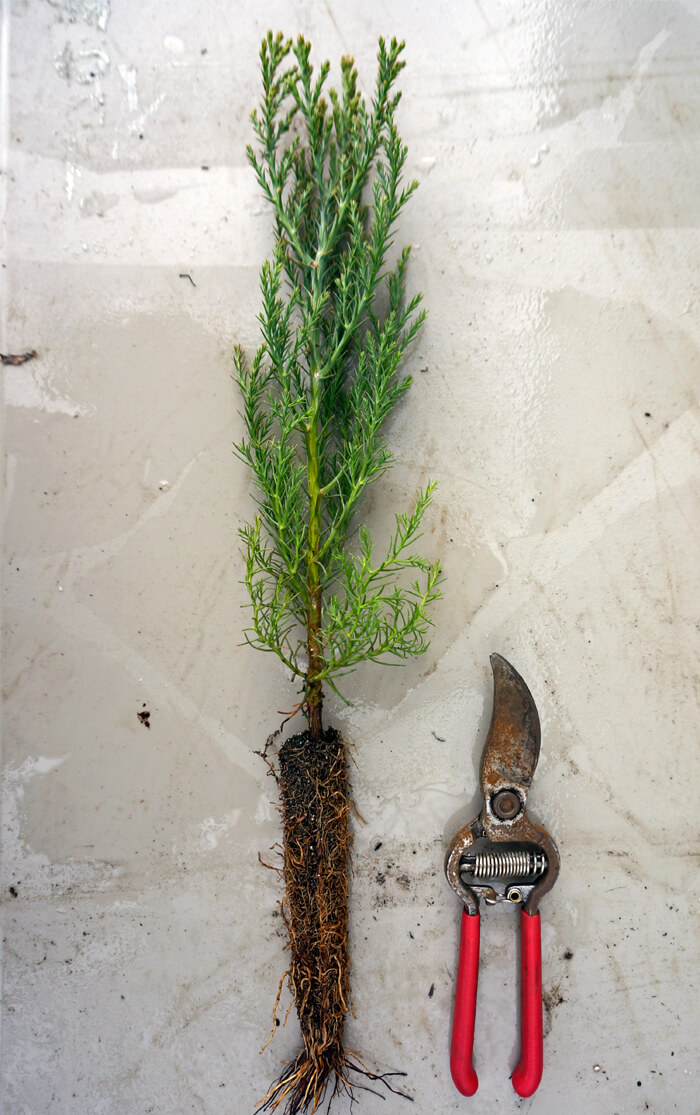
Our Deep Plug Size for spring of 2018. 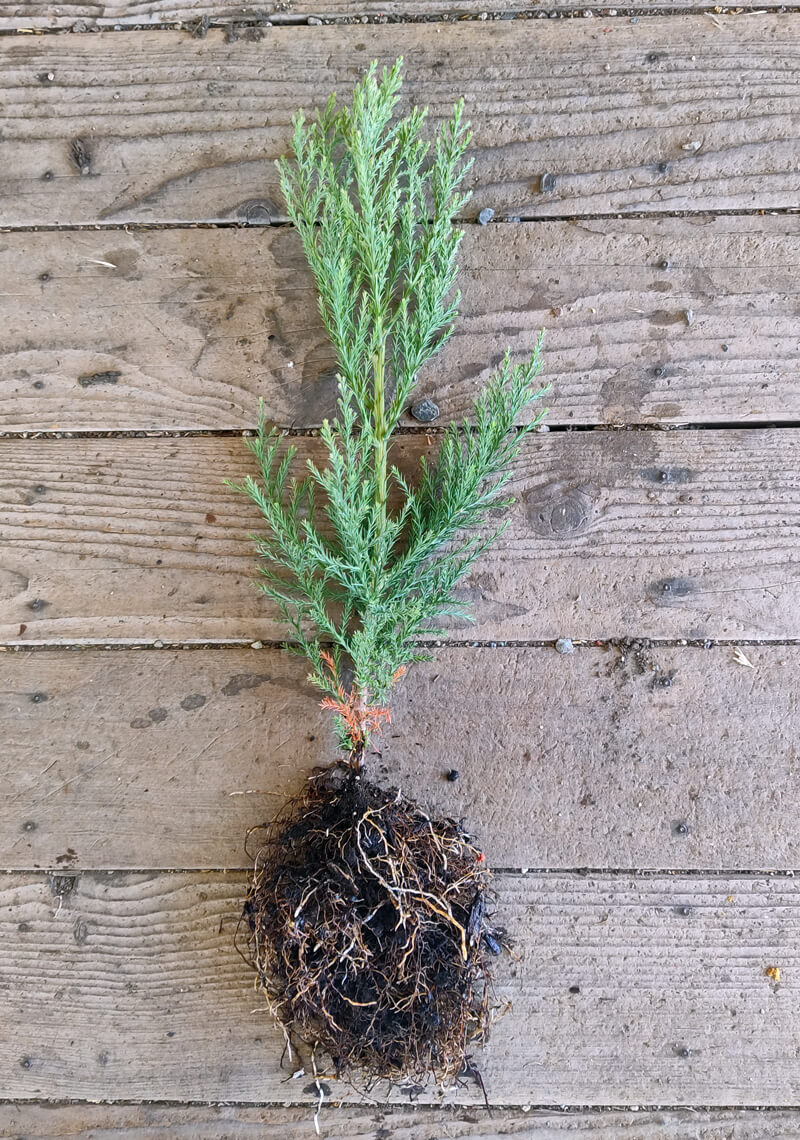
Sequoiadendron giganteum - Giant Sequoia 1 gallon size
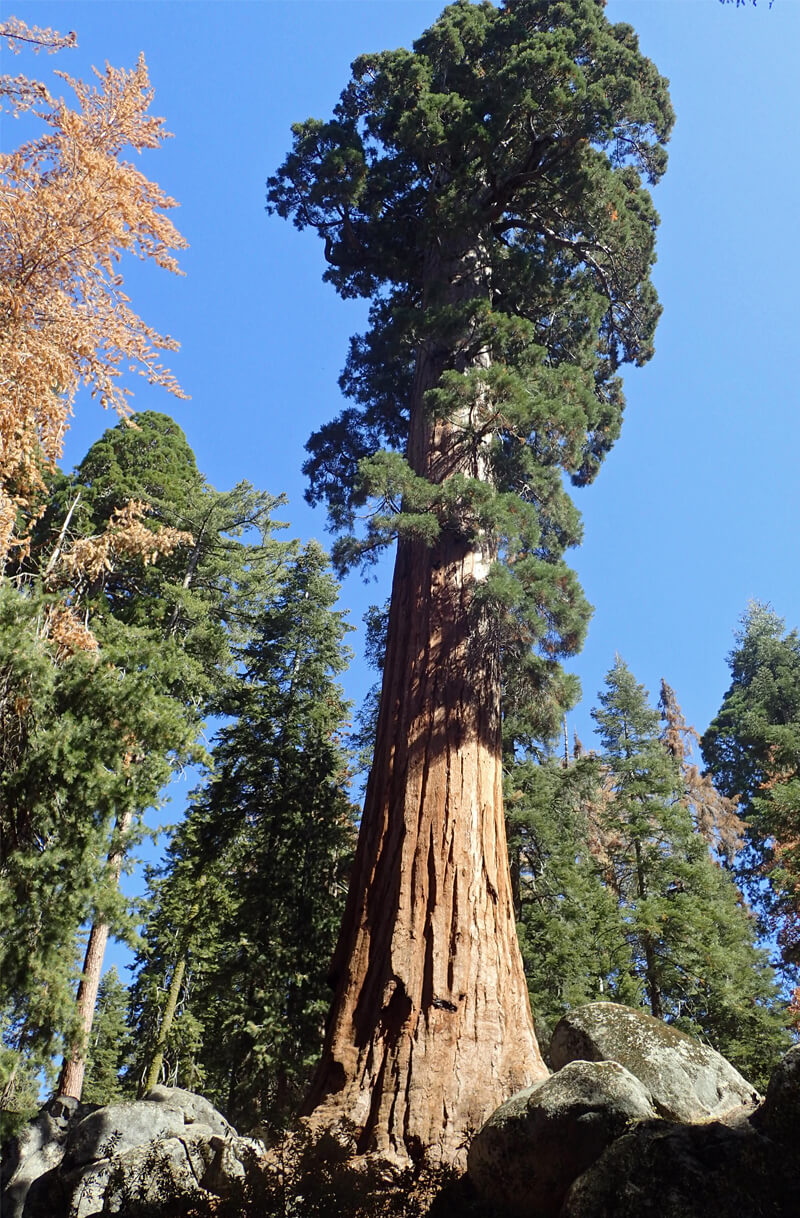 Sequoiadendron giganteum - Giant Sequoia Source: Commons 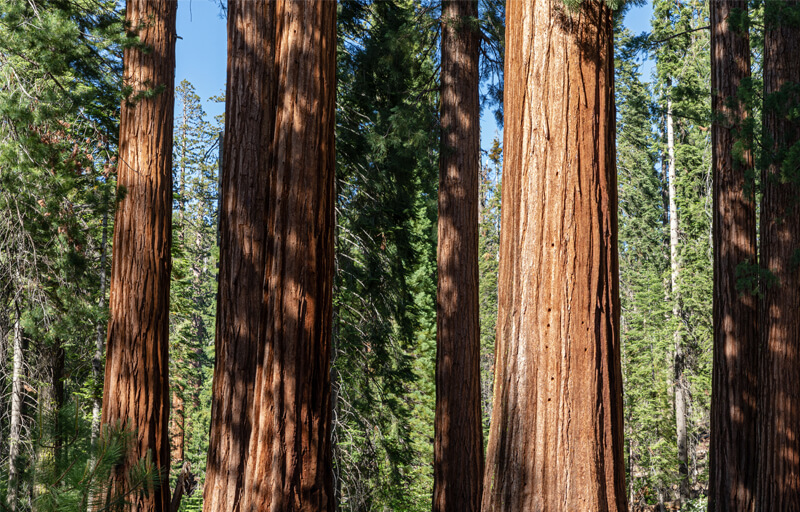 Sequoiadendron giganteum - Giant Sequoia Source: Commons 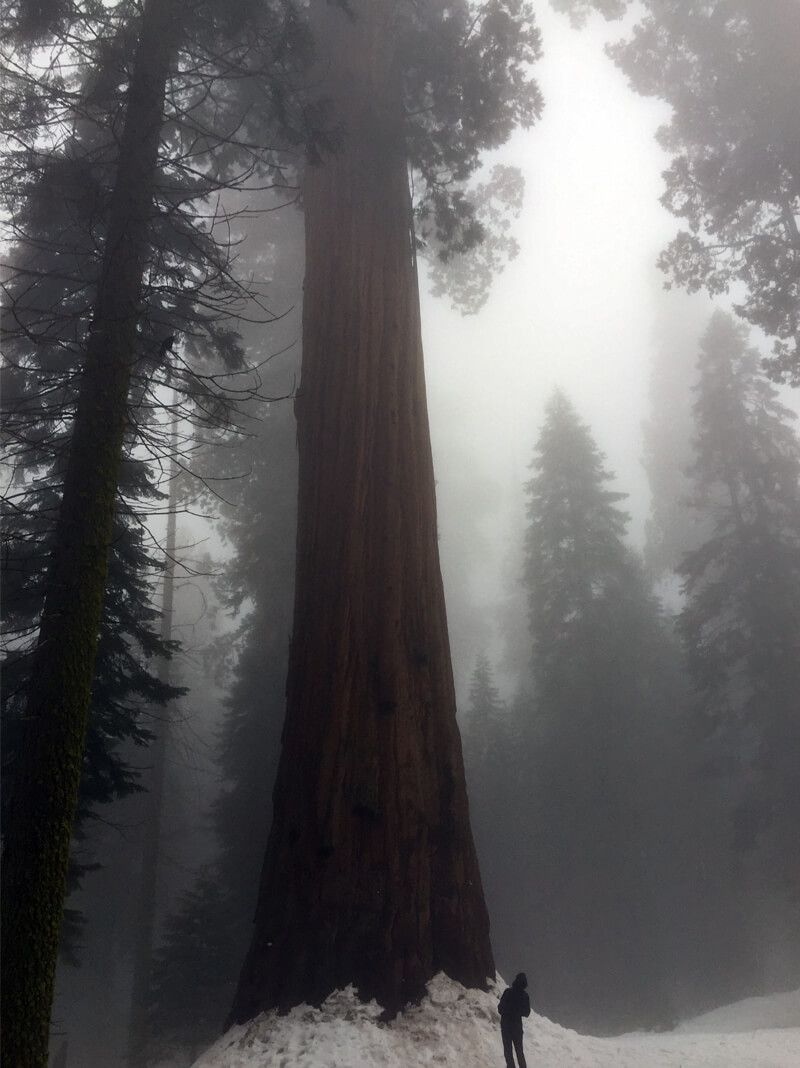 Sequoiadendron giganteum - Giant Sequoia Source: Commons 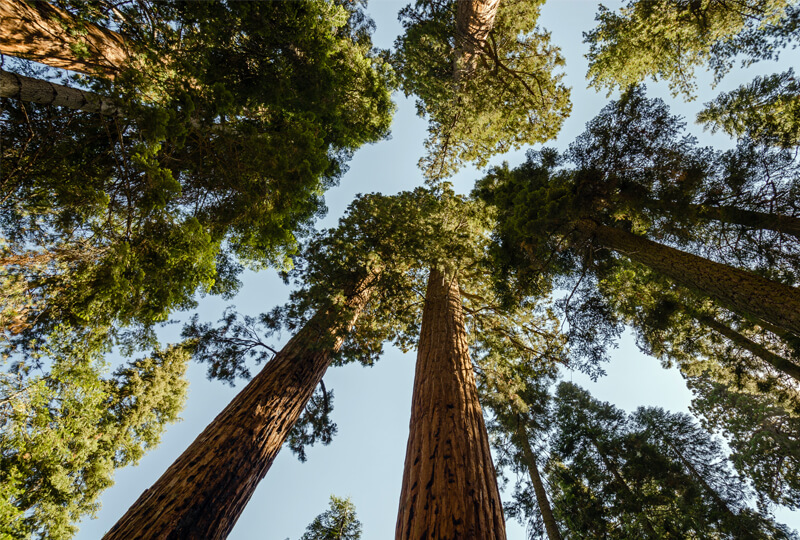 Sequoiadendron giganteum - Giant Sequoia Source: Commons Packing Plants For ShippingMost of our plants are shipped bare root while they are dormant from late November through April and ship via the U.S. Postal Service. Bamboo plants can be shipped in their containers year-round by UPS.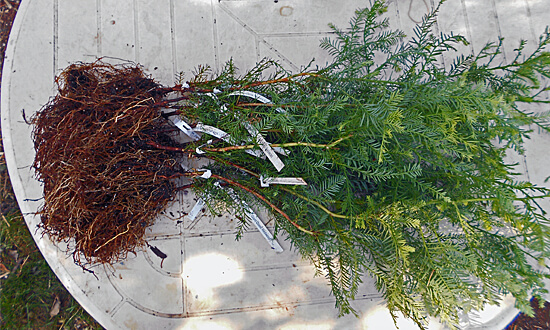 Bare root plants are soaked and wrapped together in bundles. ictured are 10x 24 inch tall Coast Redwoods. 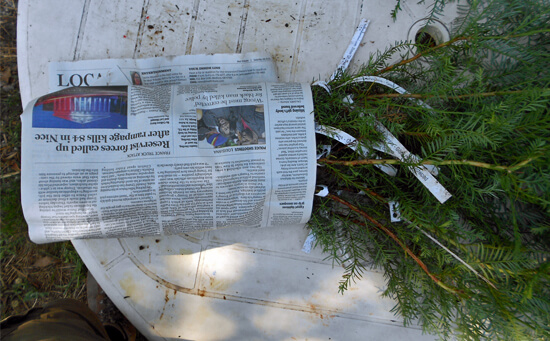 The bundled plants are wrapped in paper and labeled by variety. 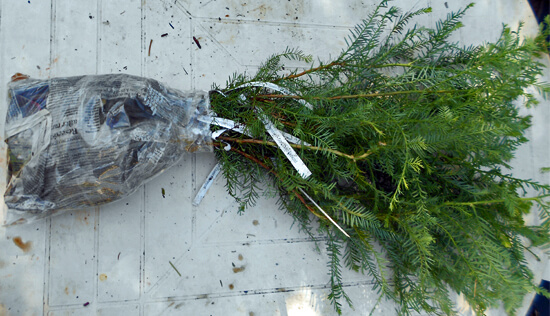 The bundle is wetted and bagged. 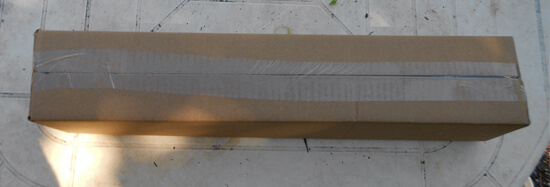 Bundles of plants are secured in long boxes. Pruning and Plant SizesWe prune both the tops and the roots of our plants at least once per year while they are growing in our nursery to ensure they develop a strong, dense form. Regular annual pruning goes a long way to ensure a healthy branching structure and this is often a missed step in many nurseries. Pruning a plant back hard after it has been neglected pruning-wise often results in an irregular branch habit or multiple leaders so we prune early and regularly instead. We also prune the roots of our plants while they are dormant which causes them to produce a much more branched structure and helps to elimate tangled masses that hinder future development. Plants that have been root pruned establish themselves much more quickly than root bound plants. Generally, hardwood plants will be pruned in the winter and conifers will be pruned in the summer.Before shipping plants we prune the tops and roots one last time. Conifers will usually have very little pruning except to balance out long branches. Shrubs are usually pruned to around 1-2 feet tall to encourage low branch development and small to medium sized trees are usually pruned to around 36-40 inches. Pruning trees at this height encourages dominant branches to begin forming around 3 feet from the ground which typically looks the best in most situations. However, if you want a tree to have branching start higher (some city codes require trees to not branch below 4 feet) we have longer boxes available. To request taller trees please contact us at least three days before your ship date. Depending on your location and the shipping routes there may be a fee for oversize package handling (usually about $15 for a 60 inch box). 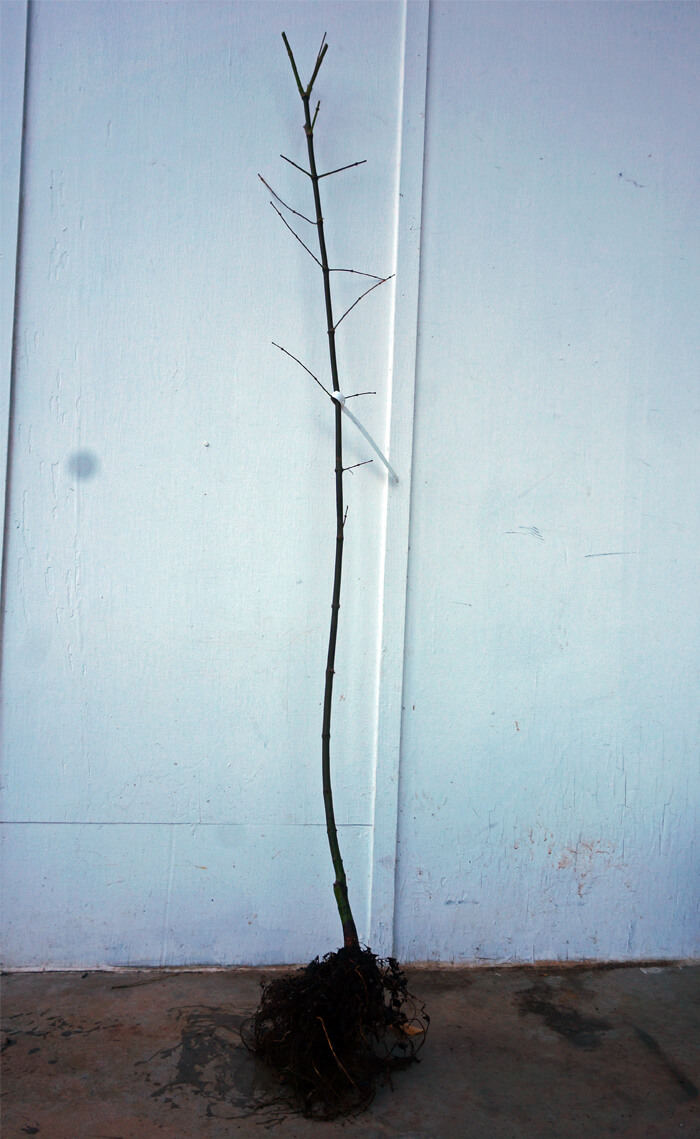 Tall trees (Oaks, Ginkgo, large Maples, etc.) are pruned to 40 inches to encourage crown development from about 36 inches and up 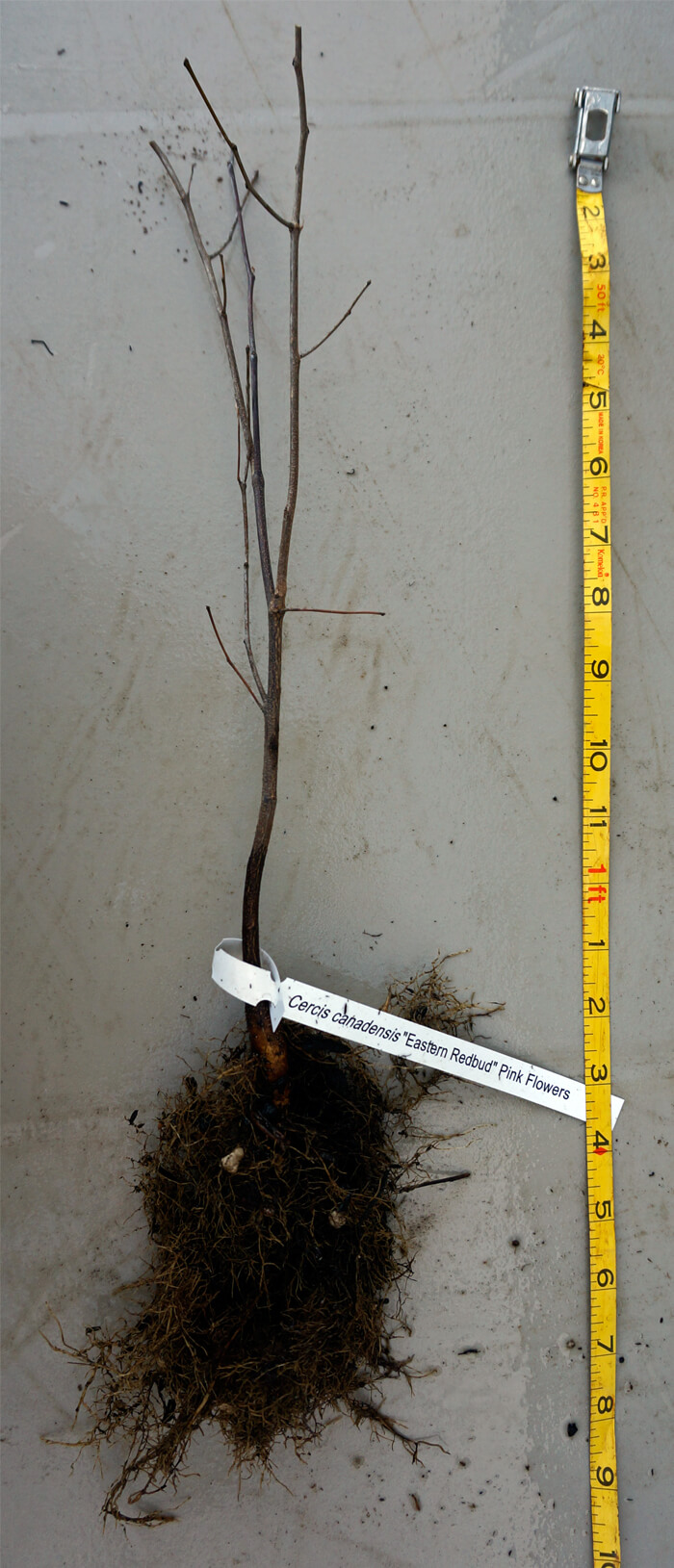 Small and medium trees (short Maples, Redbuds, Stewartia, etc.) are pruned 10-20 inches above the prune line from last year 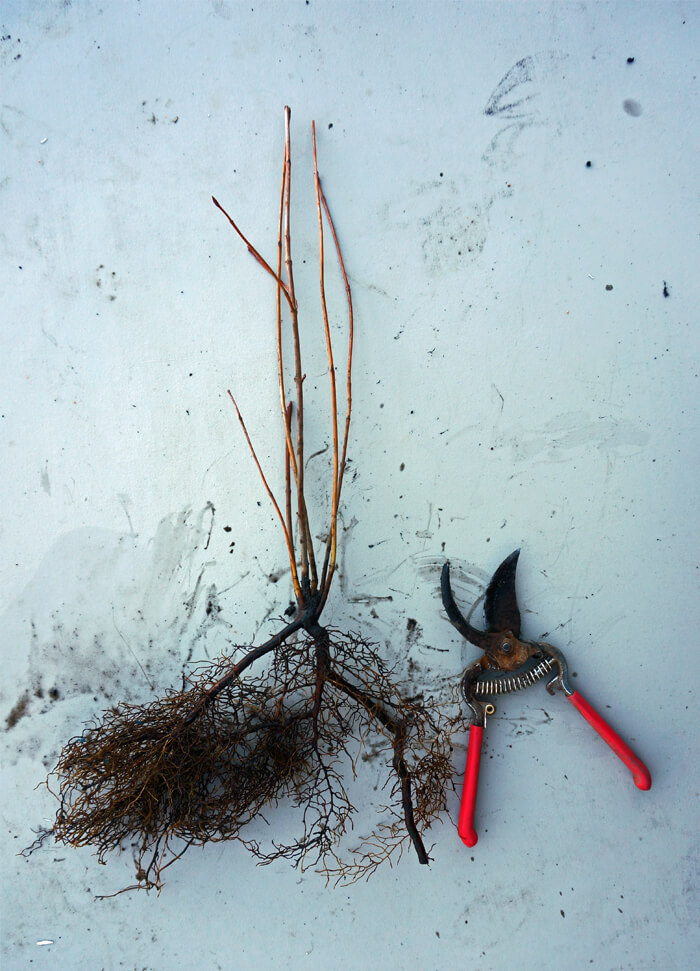 Shrubs (Weigela, Hydrangea, Viburnum, etc.) are pruned to 18 inches tall and root pruned one last time 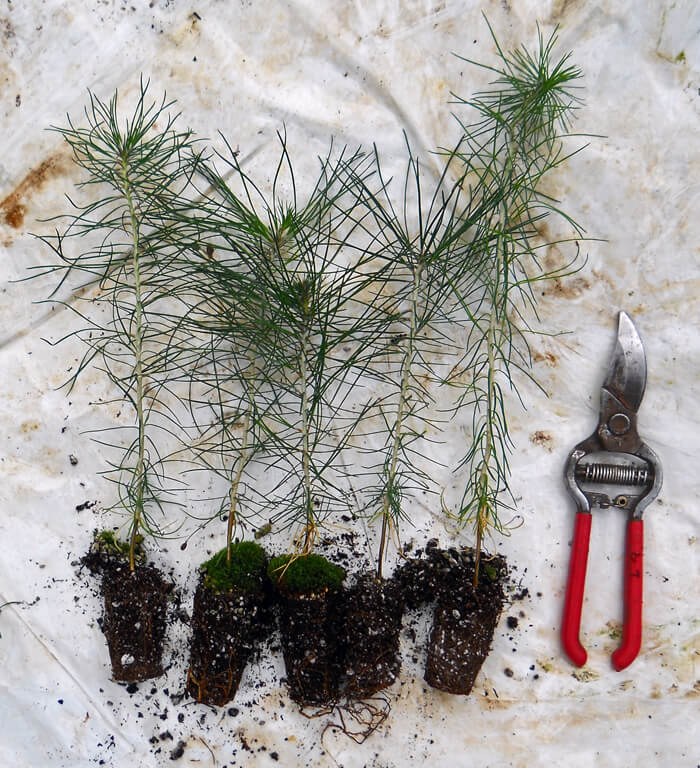 Small plug size Bamboo Plants Are Shipped In Their ContainersBamboo roots are not flexible and so plants have to be shipped in their containers. These plants are heavier and are shipped separately from bare root plants. Because they are potted they can handle longer transit times so can ship via UPS Ground instead of USPS Air Mail. Potted plants can also be shipped year-round.We regularly top our 1 gallon bamboo plants at 24-30 inches tall throughout the growing season. This results in dense, bushy foliage while allowing for economical shipping. From this size most running species will grow to 5-6 feet tall in the first spring and clumping species will usually grow to 4-5 feet tall. 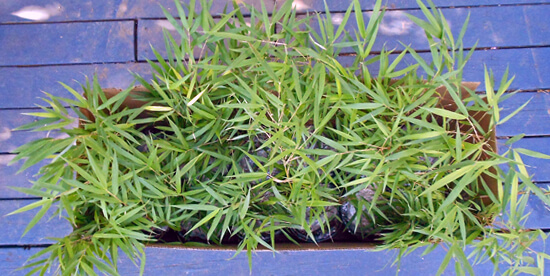 1 gallon bamboo plants strapped in and ready to be sealed. Unpacking Bare Root PlantsYou will be sent tracking details as soon as your plants are shipped. Unpack your plants as quickly as possible after they are delivered. We use two types of boxes, side-sealing and top-sealing. For boxes that are taped along the whole length you can cut the tape on either side and remove the plant bundles by cutting the tape holding the bundle to the bottom. For boxes that are sealed on the top and bottom, it is easiet to open the bottom of the box (the shipping label is at the top) and pull the bundle of plants out straight out. Check that the box is empty as there can be a second bundle of plants stuck towards the top.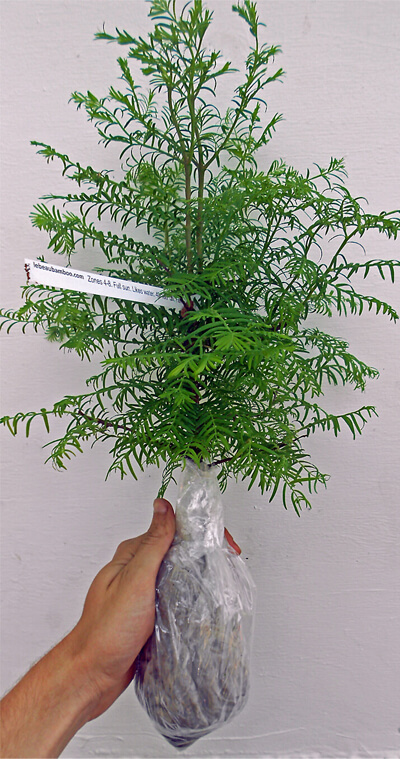 A bundle of trees. What if I am not able to plant right away?You can usually leave the plants in their shipping container unopened for 1-2 days if there were no shipping delays and you have received your plants from late November through February. Plants shipped when it is warmer can't stay in their packages for as long. |
Size Availability
deep plug - 10 to 14 inches tall - $9.99 each
Bulk Pricing: $8.50 each for 5 or more - 15% off Bulk Pricing: $7.50 each for 10 or more - 25% off
Ships free with orders of $75!Packed with a bagged root ball.
|


